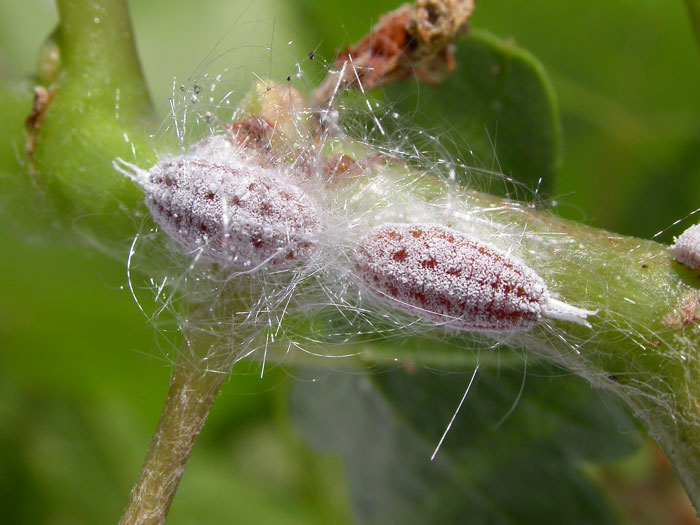March 11, 2016

To spray or not - that’s a question that often plagues pistachio growers faced with pests including Gill’s mealybug, which may or may not wreak economic havoc on their crop.
And that’s where David Haviland, University of California integrated pest management advisor for Kern County, comes in.
Haviland has published a paper with the Journal of Economic Entomology which presents a formula for determining the economic injury level that might or might not be tolerated by a grower.
The paper is based on several factors, including the treatment cost, the expected price per pound for the crop, and the anticipated yield.
It’s a matter of “does the spray pay?” Haviland said.
It could be that if an infestation is just beginning and a grower is trying to prevent spread, it might be best to be more aggressive, he adds.
The economic injury level formula adds the cost per acre for control with the anticipated yield in pounds per acre and the anticipated price, and then divides it by 0.094.
The result will be the economic injury level per cluster in May. As the cost goes up and the price and yield drops, there may be a greater tolerance for the number of mealybugs per cluster.
Haviland says a higher payment per pound of around $4 means the threshold for treating the pest “is really low.”
The ideal treatment timing is around June 1, or 10 days or so earlier when temperatures are higher.
Haviland said adult females emerge in late April or May, “and that’s when you monitor the number of mealybugs per cluster.” They can be found when the old wood connects with new growth - basically where the bud was.
Among the pesticides effective on the pest are Centaur (Buprofezin), Movento (Spirotetramat), Assail (Acetamiprid), and Admire (Imidacloprid).
Haviland said Admire is not as effective as the others but it is inexpensive and has no application costs when used in drip systems. Admire, he says, might not be the best choice in a bad infestation, but if the level is creeping back it can be used for suppression.
Haviland said Centaur, Assail, and Movento are all “extremely good.” Another good product he shared is Closer, which has been re-named Sequoia, a Dow AgroSciences product where the registration was pulled. Dow is seeking product re-registration.
Movento is costly, Haviland said, but researchers have learned it can be used at lower rates, six ounces rather than nine ounces, shaving one-third off the cost.
The pest was introduced into Tulare County in the mid-to-late 1990s. It spread slowly initially, reaching 2,000 acres in 2004 in at least five counties and was also found in almonds and wine grapes.
By 2005, 3,000 acres were infested. There were 6,000 aces infested by 2007. And pesticide reports indicate treatment on 80,000 acres in California by 2013.
“Perhaps 100,000 acres have mealybug today,” Haviland said.
Gill’s mealybugs are roughly ½ to 1/5 inch in length and pinkish grey in color. The pest is often covered with white wax secreted from a pore.
“They muck up the clusters,” Haviland said.
He explained that they “intercept carbohydrates intended for kernel development.”
Smaller kernels mean less weight and less splitting.
“The small kernel is never big enough to push them open,” Haviland said, “and the biggest problem is closed shell nuts.”
The pest can cause shell staining and an increase in adhering hulls with later harvests. But it has no association with aflatoxin.
Pistachio growers should be cautious not to confuse Gill’s mealybug with grape mealybug.
Grape mealybug is sometimes found on pistachios, but does not cause economic damage but requires treatment. Grape mealybug has four slender white tails. The female Gill’s mealybug has two broad white tails.
When poked, adult females of grape mealybug extrude a bright red liquid through structures called ostioles towards both the rear and front of the top of the body. Gill’s mealybug does not extrude such a liquid.
Mealybug feeding produces large amounts of honeydew that results in black sooty mold that can reduce photosynthesis.
The most common predators of mealybugs in pistachios are brown lacewing and lady beetle whose larva resembles a mealybug.
One way to peg problem areas is to check trees before dormancy in the fall and look for sooty mold and leaves and for mealybugs within clusters. Note those locations for further evaluation the following spring.
You May Also Like




